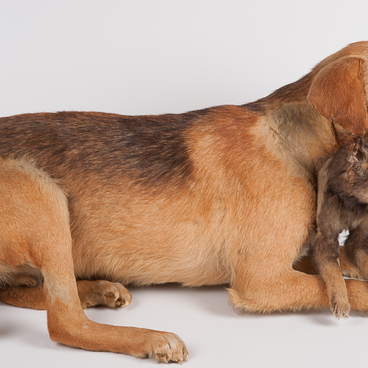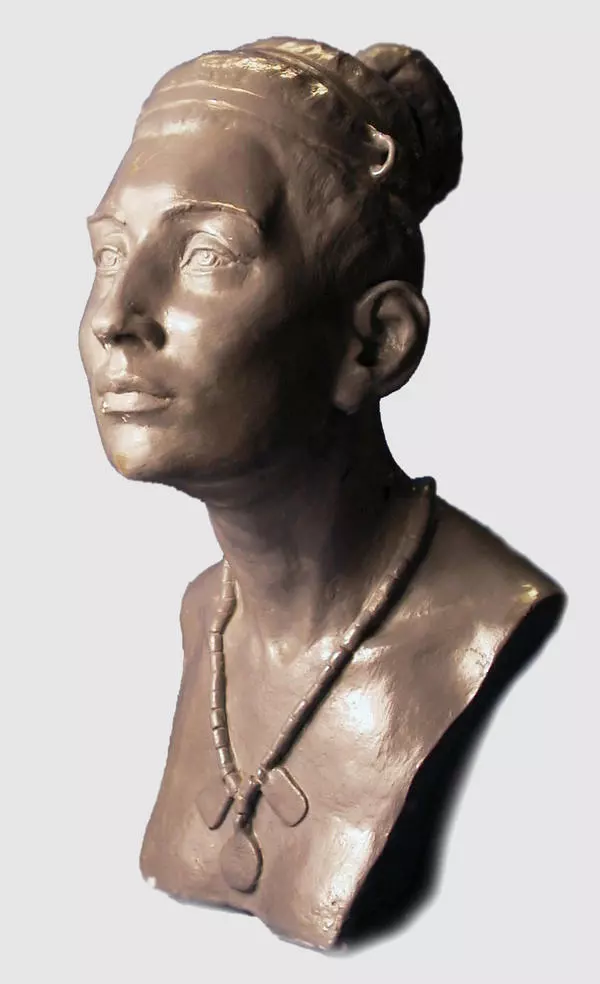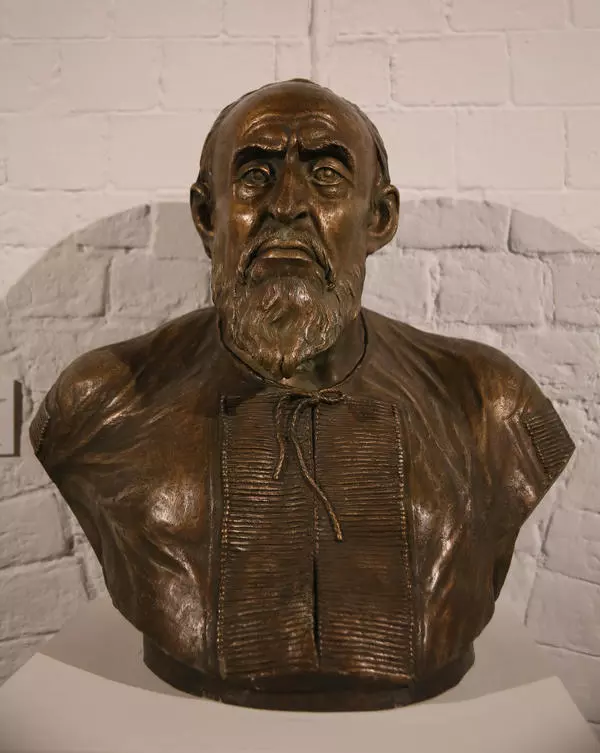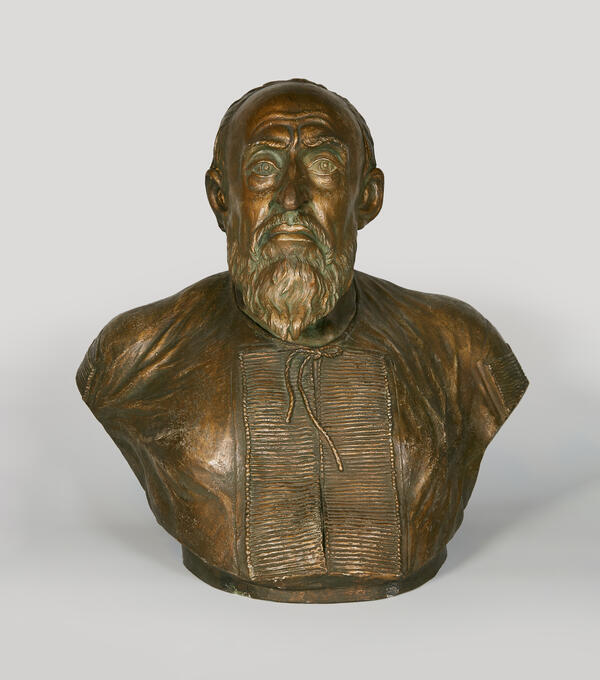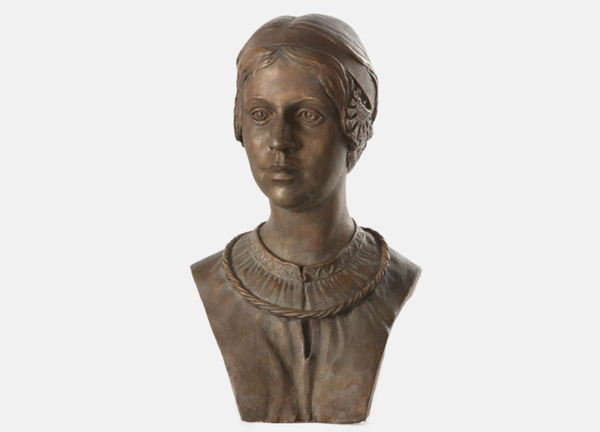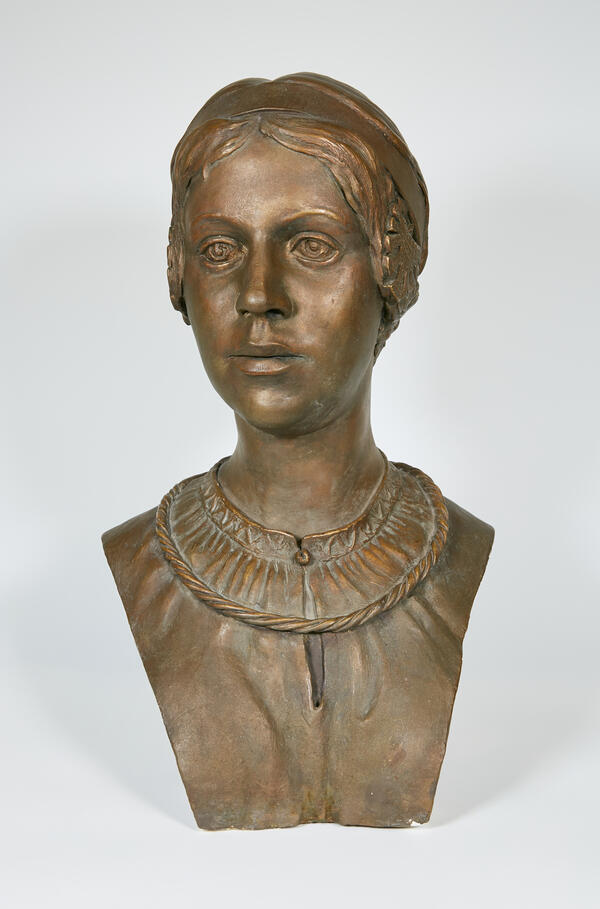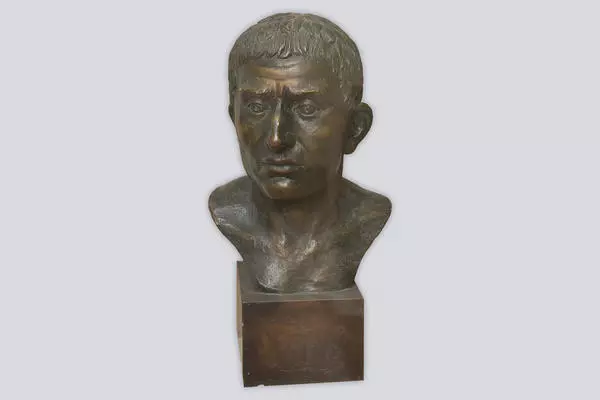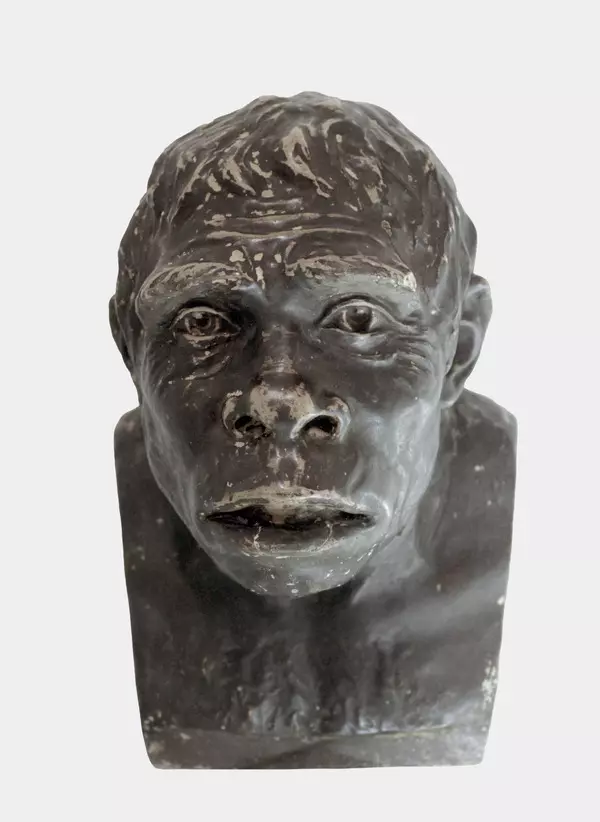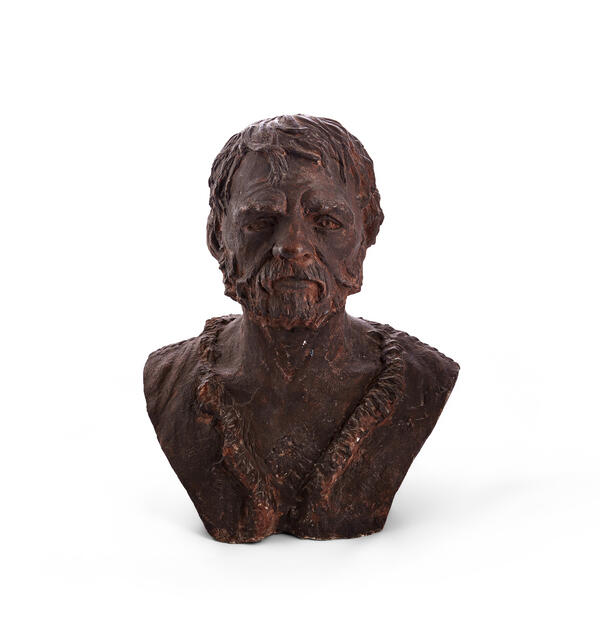The burial site of an elderly male Neanderthal, a representative of the species of Neanderthals (Homo neanderthalensis or Homo sapiens neanderthalensis), was found by scientists in 1908 in La Chapelle-aux-Saints in France. His sculptural image, featured in the exhibition and based on the structure of the skull, was made in 1954 by the Soviet anthropologist Mikhail Gerasimov.
Neanderthals lived in Europe and the Middle East in the period of 130 to 30 thousand years ago, during the peak of the Ice Age. They can be called ‘hunters’: there were few edible plants in the territories inhabited by them; hence they ate mainly animal meat.
They differed from modern humans in their short height but an extremely massive skeleton, shorter arms and legs, a barrel-shaped chest and a low elongated skull. Such a short physique helped them keep warm in cold climate. They also got over severe injuries inflicted by animals easier.
The first discovered human fossil remains were the bones of Neanderthals. The original ones were found in 1829. Nowadays, Neanderthals are considered to be the most explored species of the ancient ancestors of humans.
They lived much longer than early human species. A number of finds of this species suggest they could take care of sick and wounded humans as well and also knew how to use medicinal plants. For example, with the skeleton of a man from La Chapelle-aux-Saints, scientists found out he suffered from a severe form of arthritis and lost most of his teeth although he managed to live to advanced, by Neanderthals, age — around 50 years.
There is a dispute among anthropologists over the question why the resilient Neanderthals vanished. According to the first version, species of modern humans were responsible for their extinction: either by direct extermination, or by fierce competition for resources. According to the second one, Neanderthals vanished as they didn’t have immunity to diseases that Homo sapiens (Homo sapiens sapiens) suffered from. Other hypotheses say they vanished due to a natural disaster.
Data from paleogenetic and anthropological research indicate Neanderthals could interbreed with a species of modern humans. Moreover, scientists found several Neanderthal genes in various populations of Homo sapiens.
Neanderthals lived in Europe and the Middle East in the period of 130 to 30 thousand years ago, during the peak of the Ice Age. They can be called ‘hunters’: there were few edible plants in the territories inhabited by them; hence they ate mainly animal meat.
They differed from modern humans in their short height but an extremely massive skeleton, shorter arms and legs, a barrel-shaped chest and a low elongated skull. Such a short physique helped them keep warm in cold climate. They also got over severe injuries inflicted by animals easier.
The first discovered human fossil remains were the bones of Neanderthals. The original ones were found in 1829. Nowadays, Neanderthals are considered to be the most explored species of the ancient ancestors of humans.
They lived much longer than early human species. A number of finds of this species suggest they could take care of sick and wounded humans as well and also knew how to use medicinal plants. For example, with the skeleton of a man from La Chapelle-aux-Saints, scientists found out he suffered from a severe form of arthritis and lost most of his teeth although he managed to live to advanced, by Neanderthals, age — around 50 years.
There is a dispute among anthropologists over the question why the resilient Neanderthals vanished. According to the first version, species of modern humans were responsible for their extinction: either by direct extermination, or by fierce competition for resources. According to the second one, Neanderthals vanished as they didn’t have immunity to diseases that Homo sapiens (Homo sapiens sapiens) suffered from. Other hypotheses say they vanished due to a natural disaster.
Data from paleogenetic and anthropological research indicate Neanderthals could interbreed with a species of modern humans. Moreover, scientists found several Neanderthal genes in various populations of Homo sapiens.


